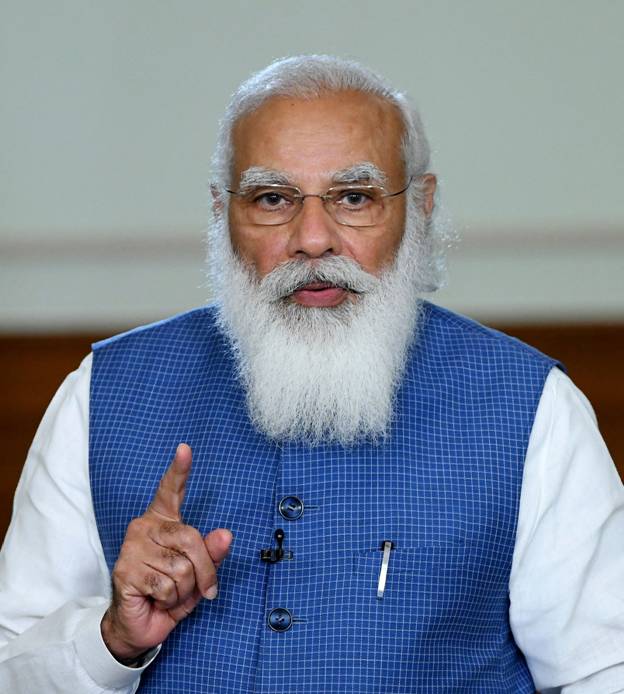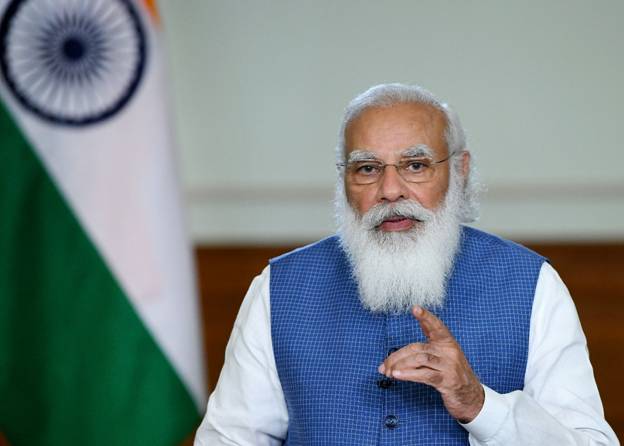Prime Minister's Office
Text of the Prime Minister’s address at the third edition of the annual conference of the Coalition for Disaster resilient Infrastructure (CDRI)
प्रविष्टि तिथि:
17 MAR 2021 4:59PM by PIB Delhi
Prime Minister of Fiji,
Prime Minister of Italy,
Prime Minister of the United Kingdom,
Excellencies,
Participants from national governments,
Experts from international organisations,
Academic institutions,and the private sector.
The third edition of the annual conference of the Coalition for Disaster resilient Infrastructure or CDRI is taking place at an unprecedented time.We are witnessing an event that is being termed a once-in-a-hundred-year disaster.COVID-19 pandemic has taught us that in an interdependent and interconnected world, no country-rich or poor, in the east or west, north or south-Is immune to the effect of global disasters.In the 2nd century AD, the Indian scholar sage Nagarjuna wrote "Verses On Dependent Arising" प्रतीत्यसमुत्पाद.He showed the inter-connectedness of all things, including human beings.This work shows the manner in which human life unfolds in the natural and social worlds.If we deeply understand this ancient wisdom, we can reduce the vulnerabilities of our current global system.On one hand, the pandemic has shown us how impacts can quickly spread across the world.And on the other hand, it has shown how the world can come together to fight a common threat.We saw how human ingenuity can solve even the most difficult problems.We have developed vaccines in a record time.The pandemic has shown us that innovation to address global challenges can come from anywhere.We need to foster a global eco-system that supports innovation in all parts of the world, and its transfer to places that are most in need.

The year 2021 promises to be a year of swift recoveryfrom the pandemic.The lessons from the pandemic, however, must not be forgotten.They apply to not only public health disasters but other disasters as well.We have a looming climate crisis.As the UN Environment chief recently said, "there is no vaccine for the climate crisis."It will take sustained and concerted efforts to mitigate climate change.We also need to adapt to changes that are already being observed and are affecting communities around the world.In such a context, the importance of this Coalition has become even more evident.If we can make our investments in infrastructure resilient, it can be a centrepiece of our wider adaptation efforts.Countries that are making large investments in infrastructure, such as India, must ensure that this is an investment in resilience, and not in risk. But as the events of recent weeks have shown, this is not a developing country problem alone.Just last month, the winter storm Uri, knocked out around one-third of electricity generating capacity in Texas, United States.Almost three million people were left without power.Such events can happen anywhere.While the complex causes of the blackout are still being understood, we must learn lessons and pre-empt such scenarios.
Many infrastructure systems- digital infrastructure, shipping lines, and aviation networks-cover the entire world!Effect of disaster in one part of the world can quickly spread across the world.Cooperation is a must for ensuring the resilience of the global system.Infrastructure is developed for the long-term.If we make it resilient, we will prevent disasters not only for ourselves but many future generations.When a bridge is lost,a telecom tower falls, power systems fail, or when a school is damaged, the loss is not just the direct damage.We should look at losses holistically.Indirect losses due to disruptions to small businesses and interrupted schooling of children may be several times higher.We need the right accounting perspective for a holistic evaluation of the situation.If we make our infrastructure resilient, we will reduce both direct and indirect losses and protect the livelihoods of millions.

In CDRI's formative years, we are grateful to have the leadership of the United Kingdom
alongside India.The year 2021 is a particularly important year.We are approaching the mid-point of the Sustainable Development Goals, the Paris agreement, and the Sendai Framework.The expectations from COP-26, to be hosted by the UK and Italy later this year, are high.
This partnership on resilient infrastructure must play its important role in helping meet some of those expectations.In this regard, I would like to share a few key areas that need to be accorded priority:First, CDRI must embody the central promise of the Sustainable Development Goals, that is, "leave no one behind".This means that we have to put the concerns of the most vulnerable nations and communities first.In this regard, the Small Island Developing Nations that are already experiencing the impacts of worsening disasters must have easy access to all the technology, knowledge and assistance that they consider necessary.We must have the capability and support to adapt global solutions to the local context.Second, we must take stock of the performance of some of the key infrastructure sectors - particularly health infrastructure and the digital infrastructure that played a central role during the pandemic.What are the lessons from these sectors? And how can we make them more resilient for the future? At the national and sub-national level we have to invest in capabilities for integrated planning, structural design, availability of modern materials, and a large number of skilled personnel in all infrastructure sectors.There is need for Research and Development in all these areas.Third, in our quest for resilience, no technological system should be considered too basic or too advanced.The CDRI must maximize the demonstration effect of the application of technology.In Gujarat, we built India's first hospital with base isolation techniques.Now base isolators for earthquake safety are manufactured in India itself.In the current context, we have many more opportunities.We must harness the full potential of geo spatial technologies, space-based capabilities, data science, artificial intelligence, material sciences, and combine it with local knowledge to pursue resilience.And finally, the notion of "resilient infrastructure" must become a mass movement galvanizing the energies of not just the experts, and formal institutions but also communities, and particularly the youth.A social demand for resilient infrastructure will go a long way in improving compliance to standards.Investing in public awareness and education is a key aspect of this process.Our education system must enhance the awareness of locally specific hazards and their possible impact on infrastructure.
In closing, I would like to say that CDRI has set a challenging and urgent agenda for itself.And it will be expected to demonstrate results very soon.In the next cyclone, in the next flood, in the next earthquake, we must be able to say that our infrastructure systems were better prepared and that we reduced losses.If damages occur, we should be able to restore services quickly and build back better.In our quest for resilience, we are all in the same boat!As the pandemic has reminded us, no one is safe till everyone is safe!We have to ensure that we leave no community, no place, no eco-system, and no economy behind.Just as the fight against the pandemic mobilized the energies of the world's seven billion people, our quest for resilience must build on the initiative and imagination of each and every individual on this planet.
Thank you very much.
***
DS
(रिलीज़ आईडी: 1705499)
आगंतुक पटल : 1304
इस विज्ञप्ति को इन भाषाओं में पढ़ें:
Urdu
,
Marathi
,
हिन्दी
,
Manipuri
,
Assamese
,
Bengali
,
Punjabi
,
Gujarati
,
Odia
,
Tamil
,
Telugu
,
Kannada
,
Malayalam